Your cart is currently empty!
Search results for: “72”
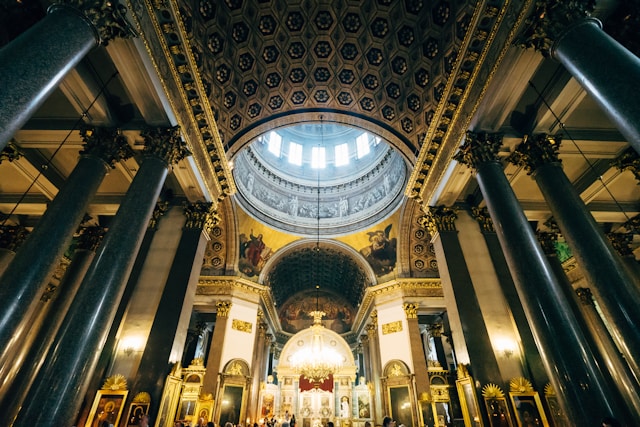
Discover the Kim Burrell Church: A Haven of Praise, Worship, and Empowerment
Introduction
Kim Burrell Church is a thriving Christian community in Houston, Texas, led by the renowned gospel singer and minister, Kim Burrell. Known for its passionate worship, inspiring messages, and community outreach, the church has become a beacon of hope and empowerment for thousands of believers.
A Legacy of Praise and Worship
Kim Burrell’s Anointed Voice
Kim Burrell’s extraordinary vocal abilities have captivated audiences worldwide. Her powerful voice, soaring melodies, and heartfelt lyrics have earned her numerous awards and accolades. Her music has inspired countless souls and brought a deeper connection with God.
Dynamic Worship Experiences
The worship services at Kim Burrell Church are transformative and uplifting experiences. The congregation enthusiastically participates in vibrant singing, fervent prayer, and dynamic preaching. The atmosphere is electric as the Holy Spirit moves and anoints the worshipers.
Biblical Teachings and Empowerment
Sound Doctrinal Foundation
Kim Burrell Church adheres to a strong biblical foundation. Pastor Burrell and her team meticulously study the scriptures and deliver sermons that are both theologically sound and transformative. The congregation is taught practical principles for daily living, personal growth, and spiritual maturity.
Empowering Ministry
Empowerment is a central theme at Kim Burrell Church. Through workshops, mentorship programs, and community initiatives, the church equips its members to fulfill their God-given potential. They are encouraged to discover their spiritual gifts, pursue their passions, and make a positive impact on the world.
Community Outreach and Social Justice
Serving the Needy
Kim Burrell Church actively reaches out to those in need in the community. Through food pantries, clothing drives, and community outreach programs, the church provides tangible support to the less fortunate. They demonstrate the love of Christ by serving those who are hurting.
Social Justice Initiatives
The church also takes a vocal stance on social justice issues. Pastor Burrell and her team speak out against injustice, racism, and inequality. They advocate for peace, unity, and equal rights for all.
Membership and Involvement
Joining the Congregation
Becoming a member of Kim Burrell Church involves a commitment to Jesus Christ, a willingness to serve others, and a desire for spiritual growth. The church provides opportunities for connection and involvement through various ministries, small groups, and volunteer opportunities.
Getting Involved
There are numerous ways to get involved at Kim Burrell Church:
- Join a worship team
- Volunteer in a ministry
- Participate in small groups
- Serve in the community
Location and Contact Information
Kim Burrell Church is located at: 8310 W Tidwell Rd, Houston, TX 77040
Phone: (713) 937-7172
Website: www.kimburrellchurch.orgConclusion
Kim Burrell Church is a vibrant and empowering Christian community that offers a welcoming and nurturing environment for spiritual growth, worship, and service. Through its passionate worship, sound biblical teachings, and community outreach, the church makes a significant impact in the lives of its members and the surrounding community. Whether you are seeking a spiritual home or looking for a place to serve, Kim Burrell Church is a beacon of hope and a transformational force in the lives of believers.
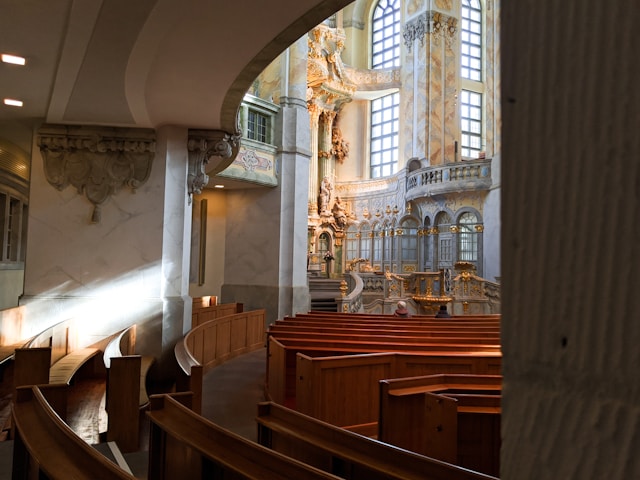
Unveiling the Rich History and Impact of Hickory Grove Baptist Church
A Legacy Steeped in Faith and Community
Hickory Grove Baptist Church stands as a beacon of spirituality, service, and community in the heart of Charlotte, North Carolina. Its roots stretch back to the humble beginnings of a small congregation in 1856, and over the centuries, it has grown into a thriving and influential spiritual center.
Humble Origins: The Founding Years
The church’s story begins with a group of African American believers who gathered in a small log cabin on the outskirts of Charlotte. Led by Reverend John Frazier, they shared their faith and established a close-knit community. As the congregation grew, they constructed a wooden church building in 1872, becoming known as the Hickory Grove Baptist Church.
Flourishing Under Strong Leadership
Reverend Dr. Walter Johnson: A Guiding Light
In 1918, Reverend Dr. Walter Johnson became pastor of Hickory Grove Baptist Church. His dynamic leadership and unwavering commitment to social justice paved the way for the church’s expansion and influence. Under his guidance, the congregation renovated the church building, established outreach programs, and became a powerful voice for the African American community.
Expanding Ministries and Community Impact
- Education: The church founded the Hickory Grove Christian School in 1957, providing quality education for children and youth.
- Community Service: Hickory Grove Baptist Church has been a hub for various social services, including a soup kitchen, food pantry, and after-school programs.
- Mission Work: The church has a long-standing commitment to missions, supporting ministries both locally and internationally.
A Center of Worship and Spiritual Growth
Worship Services: A Heartfelt Connection
Hickory Grove Baptist Church offers a diverse range of worship services to meet the spiritual needs of its congregation. From traditional hymn singing to contemporary music, there is a service for every soul. The church’s experienced worship team leads the congregation in lifting their voices in praise and adoration.
Spiritual Growth and Discipleship
- Bible Study: The church’s Bible study groups provide an opportunity for deeper study and understanding of Scripture.
- Prayer Groups: Members come together to pray for each other, their community, and the world.
- Discipleship Programs: Hickory Grove Baptist Church offers various programs to help members grow in their faith and spiritual maturity.
Community Outreach and Social Justice
Hickory Grove Baptist Church has always been deeply involved in community outreach and social justice initiatives.
Addressing Community Needs
The church’s community programs aim to address the needs of the surrounding neighborhood. From food assistance to affordable housing initiatives, Hickory Grove Baptist Church seeks to make a tangible difference in people’s lives.
Advocacy for Justice
Hickory Grove Baptist Church has a strong history of advocacy for social justice and equality. The church has been involved in the civil rights movement and continues to speak out against injustice and discrimination.
A Thriving Present and a Promising Future
Continued Leadership and Innovation
Under the guidance of current pastor Reverend Dr. Dwayne A. Bond, Hickory Grove Baptist Church continues to flourish. The church is embracing technological advancements and creative outreach initiatives to reach a wider audience.
Preparing for the Future
Hickory Grove Baptist Church is actively planning for the future. The congregation is engaged in strategic planning to ensure that the church remains a vibrant and impactful spiritual center for generations to come.
Contact Information
www.hickorygrovebaptistchurch.com
1012 Seigle Avenue, Charlotte, NC 28206
Phone: (704) 372-1820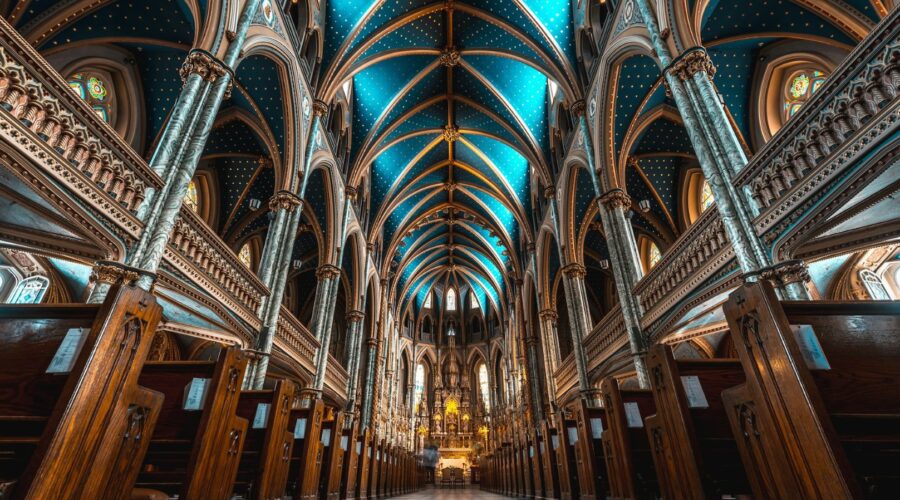
Gregory of Nyssa: A Comprehensive Guide to His Life, Philosophy, and Legacy
Introduction
Gregory of Nyssa (c. 335-395 AD) was a prominent theologian, bishop, and writer in the early Christian Church. He is considered one of the Cappadocian Fathers, along with his elder brother, Basil the Great, and friend, Gregory Nazianzen. Gregory of Nyssa’s writings and ideas have significantly influenced Christian thought and theology.
Early Life and Education
Gregory was born in Caesarea Mazaca (modern-day Kayseri, Turkey) around 335 AD. His father, a rhetorician, provided him with an early education in classical literature, philosophy, and rhetoric. Gregory pursued advanced studies in Athens and Alexandria, further honing his intellectual abilities.
Conversion to Christianity
Gregory’s early religious leanings were towards Gnosticism, but he later converted to Christianity under the influence of his brother, Basil. He was baptized around 361 AD and embarked on a monastic life, living an ascetic lifestyle devoted to prayer and contemplation.
Episcopal Career
In 372 AD, Gregory was ordained as the bishop of Nyssa, a small town in what is now Turkey. He faced various challenges during his episcopacy, including the Arian controversy and opposition from certain factions within the church. Gregory remained steadfast in his defense of orthodox Christian beliefs and played a significant role in combating heresy.
Theological Contributions
Gregory of Nyssa is renowned for his theological writings and ideas. Here are some key aspects of his theological system:
- Trinitarian Theology
Gregory played a pivotal role in developing the doctrine of the Trinity. He emphasized the distinctness of the three persons of the Godhead (Father, Son, and Holy Spirit) while maintaining their unity in essence.
- Christology
Gregory’s Christology centered on the idea that Christ is the mediator between God and humanity. He emphasized Christ’s divinity and humanity, arguing that both are essential for salvation.
- Anthropology
Gregory believed that humans are created in the image and likeness of God. He viewed the human body as a temple of the Holy Spirit and emphasized the importance of practicing virtue and living a Christ-like life.
- Eschatology
Gregory taught that the ultimate destiny of humankind is union with God in the resurrection. He believed in a universal resurrection, where all humans will be judged according to their deeds and ultimately enjoy eternal life or face eternal punishment.
Literary Works
Gregory of Nyssa was a prolific writer, and his works have been widely studied by scholars and theologians. Some of his most notable literary works include:
- “Life of Moses”
An allegorical treatise that interprets the life of Moses as a journey towards union with God.
- “Exegetical Treatise on the Song of Songs”
A mystical interpretation of the Song of Songs, seen as a representation of the soul’s union with Christ.
- “Against Eunomius”
A refutation of the Arian heresy, defending the orthodox doctrine of the Trinity.
- “On the Soul and the Resurrection”
A philosophical and theological treatise exploring the nature of the soul and the resurrection of the body.
Legacy and Influence
Gregory of Nyssa’s theological contributions and spiritual writings have profoundly influenced Christian thought and practice. He is recognized as a saint in both the Eastern Orthodox and Roman Catholic Churches. His works continue to be studied and valued by scholars and religious leaders, shaping Christian theology and spirituality for centuries.
Conclusion
Gregory of Nyssa was an influential figure in the early Christian Church, whose theological writings and ideas have left a lasting mark on Christian thought and practice. His contributions to Trinitarian theology, Christology, and eschatology have shaped the understanding of these doctrines in the Christian tradition. Gregory’s spiritual insights and mystical writings continue to inspire and guide believers today.
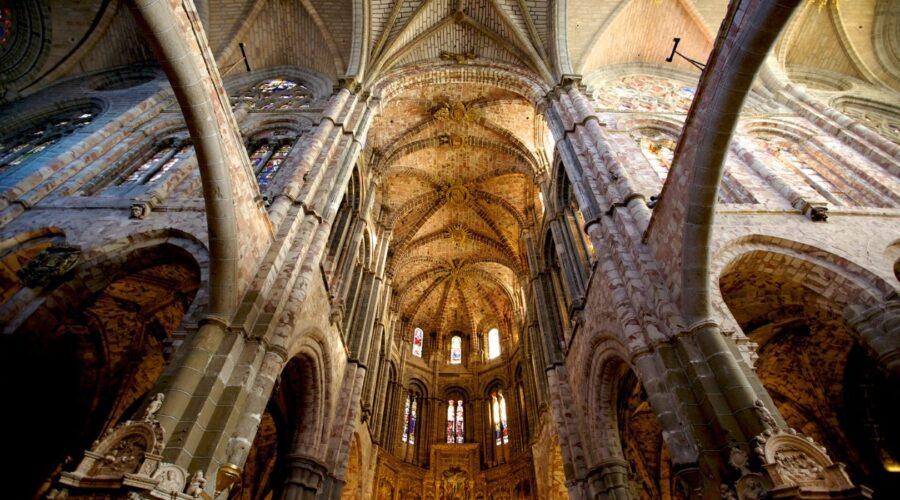
Discover the Enchanting Annunciation Greek Orthodox Church: A Spiritual and Historical Haven

Nestled in the heart of Milwaukee, Wisconsin, the Annunciation Greek Orthodox Church stands as a testament to faith, history, and architectural brilliance. This magnificent edifice has been a beacon of spirituality and a cornerstone of the Greek community for over a century, captivating visitors with its stunning beauty and profound historical significance.
History: A Journey Through Time
The Annunciation Greek Orthodox Church traces its roots back to the late 19th century, when a small group of Greek immigrants gathered to form a congregation in Milwaukee. In 1904, they acquired a modest building that served as their first church home. As the community grew, a grander and more permanent structure was needed.
In 1918, the congregation commissioned the renowned architect Frank Lloyd Wright to design a new church that would reflect the Byzantine heritage and architectural traditions of Greece. Wright’s design, which combined classical elements with modern innovations, was a bold and visionary departure from the typical church architecture of the time.
The cornerstone of the new church was laid in 1923, and the building was completed in 1926. The Annunciation Greek Orthodox Church has since become a designated Milwaukee Landmark, recognized for its architectural significance and its role in shaping the city’s cultural landscape.
Architecture: A Symphony of Styles
The Annunciation Greek Orthodox Church is a masterpiece of architectural fusion, seamlessly blending elements from different eras and cultures. Wright’s design is a testament to his architectural genius, creating a structure that is both aesthetically pleasing and spiritually uplifting.
Byzantine Influences:
- Geometric patterns and mosaic decorations
- Domed roof and arched windows
- Iconography and religious symbols
Modernist Innovations:
- Clean lines and geometric shapes
- Concrete construction and cantilevered balconies
- Extensive use of glass and natural light
Interior: A Sanctuary of Beauty
Stepping inside the Annunciation Greek Orthodox Church is a truly awe-inspiring experience. The interior is a symphony of colors, textures, and intricate details that create a sacred and immersive atmosphere.
Iconography:
- Depictions of Christ, the Virgin Mary, and saints
- Traditional Byzantine iconography with gold leaf and rich colors
- Icons adorn the walls, ceilings, and iconostasis
Mosaics:
- Vibrant and colorful mosaics depicting biblical scenes
- Geometric and floral patterns add to the visual richness
- Mosaics found in the sanctuary, narthex, and other areas
Frescoes:
- Large-scale paintings portraying religious narratives
- Traditional fresco technique with pigments and wet plaster
- Frescoes adorn the interior walls and ceilings
Community: A Spiritual Hub
Beyond its architectural splendor, the Annunciation Greek Orthodox Church is a vibrant and active community center. It offers a wide range of programs and services that cater to the spiritual, social, and educational needs of its members and the broader community.
- Worship: Daily services, Sunday Liturgy, and special religious observances
- Education: Sunday School, Greek language classes, and adult education programs
- Social events: Festivals, cultural gatherings, and community outreach initiatives
- Philoptochos Society: A philanthropic organization that supports local charities and community members in need
Visiting the Annunciation Greek Orthodox Church
If you are planning to visit the Annunciation Greek Orthodox Church, here are a few tips to ensure a meaningful and memorable experience:
- Respectful dress: Modest attire that covers shoulders and knees is recommended.
- Photography restrictions: Photography is not permitted during worship services or inside the sanctuary.
- Guided tours: Guided tours are available upon request and provide a deeper understanding of the church’s history and architecture.
- Mass: Sunday Liturgy is held at 10:00 AM and is open to all.
Conclusion
The Annunciation Greek Orthodox Church is a remarkable testament to the power of faith, the beauty of architecture, and the strength of community. Standing proudly in the heart of Milwaukee for over a century, it continues to inspire and uplift visitors with its timeless beauty and enduring spiritual presence. Whether you are a seeker of spirituality, an admirer of architecture, or simply curious to explore the rich cultural heritage of Milwaukee, the Annunciation Greek Orthodox Church is a destination that promises to leave a lasting impression.
Additional Information
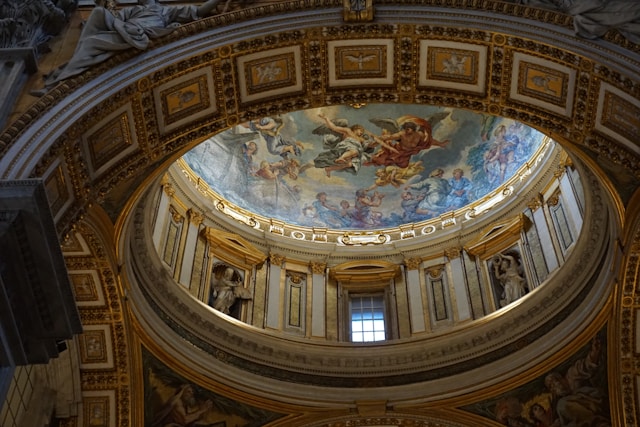
Discover the Rich History and Impact of the African Methodist Episcopal Church
Origins and Early Years
The African Methodist Episcopal (AME) Church, founded in 1816, is a historically Black denomination that has played a pivotal role in American history. Richard Allen, a formerly enslaved Methodist minister, led a group of African Americans to establish the church in Philadelphia, Pennsylvania, after being subjected to discrimination and segregated seating in white churches.
The AME Church was founded on principles of self-governance, equality, and the empowerment of African Americans. It provided not only religious services but also social and educational opportunities for its members.
Growth and Expansion
The AME Church expanded rapidly throughout the United States during the 19th century. By 1848, it had grown to include 100,000 members and had established churches in both the North and the South.
The church played a significant role in the abolitionist movement and the fight for civil rights. Many AME ministers were outspoken proponents of freedom and equality, and the church’s membership included notable abolitionists such as Frederick Douglass and Harriet Tubman.
Social and Educational Contributions
Beyond its religious mission, the AME Church made significant contributions to the social and educational development of African Americans. It established schools, orphanages, and hospitals, providing vital services to communities that were often denied access to such institutions.
The AME Church also operated publishing houses that produced books, newspapers, and other materials geared towards educating and empowering African Americans.
Prominent Leaders
Richard Allen
Richard Allen, the founder of the AME Church, was a former slave who became an influential religious leader and abolitionist. He served as the first bishop of the AME Church and played a key role in establishing the denomination’s doctrine and governance.
William Paul Quinn
William Paul Quinn was a prominent AME minister and abolitionist who served as bishop from 1864 to 1872. He was a leading advocate for civil rights and helped to found the Colored National Convention.
Daniel Payne
Daniel Payne was an AME minister and theologian who served as bishop from 1852 to 1864. He was a prominent advocate for education and founded Wilberforce University in Ohio, one of the first colleges established for African Americans.
Current Status and Impact
- Today, the AME Church has over 2.5 million members and more than 10,000 churches around the world.
- It is a member of the World Methodist Council and the National Council of Churches.
- The AME Church continues to play an important role in the African American community, providing spiritual guidance, social services, and advocacy for justice.
Key Principles
The African Methodist Episcopal Church is based on the following fundamental principles:
- The autonomy and self-governance of the Black church.
- The equality of all persons, regardless of race, gender, or socioeconomic status.
- The empowerment of African Americans through education, economic development, and social activism.
Challenges and Controversies
Like any institution, the AME Church has faced challenges and controversies throughout its history.
Internal Divisions
The AME Church has experienced occasional internal divisions over theological and governance issues. These divisions have sometimes led to the formation of separate denominations.
Racial Discrimination
The AME Church has faced discrimination and prejudice from both white and Black society throughout its history. However, it has remained resilient and has continued to advocate for racial equality.
Conclusion
The African Methodist Episcopal Church is a testament to the resilience and determination of the African American community. It has played a vital role in the fight for civil rights, the promotion of education, and the empowerment of African Americans.
Today, the AME Church continues to be a vibrant and influential force in the Christian world. It is a beacon of hope and a source of strength for its members and the communities it serves.
Additional Resources
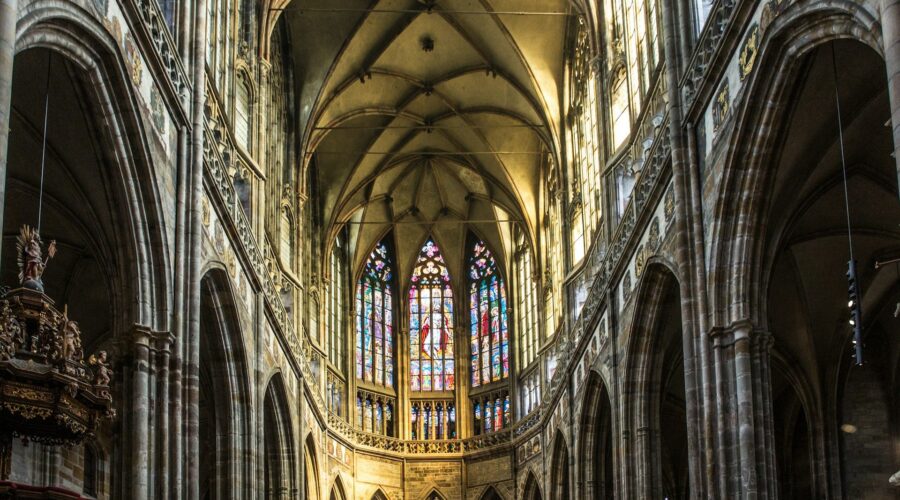
Pilgrim Rest: A Haven for Spiritual Renewal and Tranquility
Introduction
Pilgrim Rest, a serene destination nestled amidst the picturesque Blue Ridge Mountains of South Carolina, beckons weary souls seeking respite, spiritual rejuvenation, and a profound connection with their inner selves. This idyllic sanctuary offers a perfect blend of natural beauty, historical significance, and a vibrant spiritual community that fosters personal growth and transformation.
Historical Significance of Pilgrim Rest
Pilgrim Rest traces its roots back to the 18th century, when it served as a gathering place for enslaved Africans who escaped to freedom along the Underground Railroad. In 1872, the African Methodist Episcopal (AME) Church established a camp meeting ground here, which quickly became a hub for religious gatherings, revivals, and community empowerment.
Over the years, Pilgrim Rest played a pivotal role in the civil rights movement. Martin Luther King Jr. and other notable leaders visited the site and delivered powerful sermons that inspired and rallied the community. Today, Pilgrim Rest stands as a testament to the resilience, faith, and activism of those who fought for equality and justice.
Spiritual Renewal at Pilgrim Rest
Pilgrim Rest is renowned for its transformative spiritual atmosphere. The serene surroundings, coupled with the vibrant worship services and programs, create an environment conducive to deep introspection, prayer, and communion with God.
- Worship Services: Pilgrim Rest AME Church offers regular Sunday services, mid-week Bible studies, and special worship events that foster spiritual growth.
- Retreats and Conferences: The Pilgrim Rest Retreat & Conference Center hosts various retreats, conferences, and workshops designed to deepen spiritual understanding, promote personal development, and inspire change.
- Prayer Trails: Pilgrim Rest boasts peaceful prayer trails that meander through the woods, providing solitude and opportunities for quiet reflection and communing with nature.
Tranquility in Nature
Beyond its spiritual significance, Pilgrim Rest is also a haven for nature enthusiasts, offering an escape from the hustle and bustle of daily life.
- Hiking Trails: Numerous hiking trails wind through the surrounding Blue Ridge Mountains, ranging from easy to challenging, showcasing stunning views and diverse flora.
- Lake Murray: Just a short drive from Pilgrim Rest, Lake Murray beckons with its pristine waters and abundant opportunities for fishing, boating, and swimming.
- Table Rock State Park: A scenic park located nearby, Table Rock State Park features breathtaking waterfalls, hiking trails, and panoramic vistas.
Community Connection and Growth
Pilgrim Rest is more than a spiritual retreat; it’s a vibrant community that welcomes visitors with open arms.
- Community Center: The Pilgrim Rest Community Center serves as a gathering place for social events, educational programs, and initiatives that foster community development.
- Historical Sites: The site boasts several historical buildings, including the Pilgrim Rest Cabin and the AME Church, which offer glimpses into the area’s rich past.
- Local Businesses: Pilgrim Rest supports local businesses that provide quality goods and services, including restaurants, cafes, and shops selling artisanal crafts and souvenirs.
Planning Your Pilgrimage
To embark on your pilgrim journey to Pilgrim Rest, consider the following tips:
- Accommodation: Pilgrim Rest offers various lodging options, including the Pilgrim Rest Guest House and nearby hotels and vacation rentals.
- Meals: The Pilgrim Rest Dining Hall provides delicious and wholesome meals, while the local restaurants offer a range of dining options.
- Transportation: Pilgrim Rest is accessible by car and is conveniently located near major highways. Shuttle services and taxi services are also available.
- Recommended Length of Stay: A weekend or longer is recommended to fully experience the spiritual atmosphere and tranquility of Pilgrim Rest.
Events Calendar Date Event February 18-19 Prayer and Fasting Weekend March 4-6 Women’s Retreat April 15-17 Spring Revival Conclusion
Pilgrim Rest beckons all who seek spiritual renewal, tranquility, and a profound connection with their inner selves. Its rich history, vibrant spiritual community, stunning natural surroundings, and welcoming atmosphere make it a truly transformative destination. Whether you’re seeking respite from life’s challenges, inspiration for personal growth, or simply a chance to connect with nature and your spirituality, Pilgrim Rest invites you on a journey of peace, rejuvenation, and lasting impact.
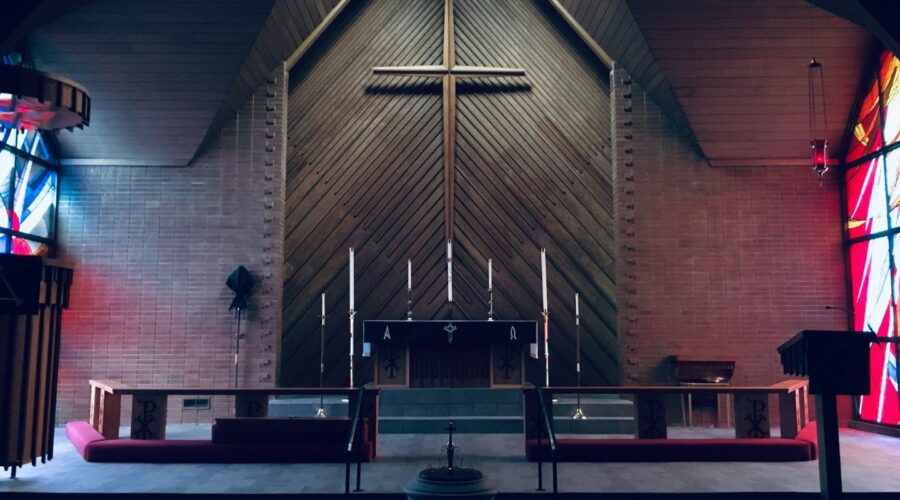
Discover the Majestic Grandeur of St. Charles Church: A Historic and Architectural Masterpiece
Embark on a captivating journey through the hallowed halls of St. Charles Church, a beloved landmark that has stood as a testament to faith and architectural ingenuity for centuries. This comprehensive blog delves into the rich history, stunning architecture, and captivating features of this magnificent edifice, leaving you in awe of its enduring legacy.
Historical Background
The story of St. Charles Church unfolds in the heart of Vienna, Austria, a city renowned for its cultural treasures. Its origins trace back to the 17th century when Emperor Charles VI, seeking to express gratitude for the birth of his heir, commissioned the construction of a monumental church. The grand vision was entrusted to the renowned Baroque architect Johann Bernhard Fischer von Erlach, who embarked on creating a masterpiece that would leave an indelible mark on Vienna’s skyline.
Jesuit Legacy
The history of St. Charles Church is inextricably intertwined with the Society of Jesus, also known as the Jesuits. Emperor Charles VI entrusted the Jesuits with the task of managing the church, recognizing their dedication to education and spirituality. The Jesuits have played a significant role in shaping the character and legacy of St. Charles Church, leaving a lasting impact on its architectural design and the spiritual lives of its congregants.
Architectural Marvel
St. Charles Church stands as a testament to the ingenuity and artistry of Baroque architecture. Its imposing exterior, adorned with intricate carvings and sculptures, hints at the grandeur that awaits within. Upon entering the church, visitors are greeted by a breathtaking interior of soaring columns, opulent frescoes, and an abundance of natural light.
Monumental Dome
The most striking feature of St. Charles Church is undoubtedly its majestic dome. Rising high above the nave, the dome is a masterpiece of engineering and artistry. Adorned with intricate frescoes depicting scenes from the life of St. Charles Borromeo, the patron saint of the church, the dome creates an awe-inspiring effect that leaves visitors spellbound.
Intricate Frescoes
The interior of St. Charles Church is a canvas for breathtaking frescoes that adorn the walls and ceilings. These exquisite artworks, created by renowned artists such as Johann Michael Rottmayr and Daniel Gran, depict biblical scenes, allegorical figures, and the life of the church’s patron saint. Each fresco tells a captivating story, inviting visitors to delve into the depths of faith and spirituality.
Captivating Features
Beyond its grand architecture, St. Charles Church is home to several captivating features that enhance its allure.
- Opulent Altars: The church boasts several ornate altars, each dedicated to a different saint or aspect of Catholic devotion. The high altar, a masterpiece of Baroque artistry, is adorned with intricate carvings, sculptures, and shimmering gold leaf.
- Historical Organs: St. Charles Church is renowned for its magnificent organs, which have played a central role in its musical heritage. The main organ, built by Johann David Sieber, is a masterpiece of craftsmanship, featuring over 4,000 pipes and a breathtaking sound.
- Imperial Crypt: Located beneath the church, the Imperial Crypt is the final resting place of several members of the Habsburg dynasty, including Emperor Charles VI and Empress Maria Theresa. Adorned with marble sarcophagi and ornate decorations, the crypt offers a glimpse into the lives and legacies of Vienna’s former rulers.
Visiting Information
Planning a visit to St. Charles Church is a must for any traveler interested in history, architecture, or spirituality. Here’s what you need to know:
- Location: St. Charles Church is located in Karlsplatz, in the heart of Vienna, Austria.
- Hours: The church is open daily from 9:00 AM to 6:00 PM.
- Admission: Admission to the church is free of charge. However, there may be a small fee to access certain areas, such as the Imperial Crypt.
- Dress Code: Visitors are expected to dress respectfully when entering the church, covering their shoulders and knees.
- Guided Tours: Guided tours of the church are available for a fee. These tours provide an in-depth look at the history, architecture, and captivating features of St. Charles Church.
Legacy and Impact
Throughout its long history, St. Charles Church has played a significant role in the cultural and spiritual life of Vienna. Its stunning architecture has inspired countless artists and architects, while its religious significance has drawn pilgrims and worshippers for centuries.
Today, St. Charles Church remains a beloved landmark, attracting visitors from around the world. Its awe-inspiring beauty, captivating features, and enduring legacy make it a must-see destination for anyone seeking a glimpse of Vienna’s rich history and architectural heritage.
Table 1: Key Features of St. Charles Church Feature Description Architect Johann Bernhard Fischer von Erlach Style Baroque Construction dates 1716-1737 Height of dome 72 meters (236 feet) Number of organs 4 Number of bells 6 Patron saint St. Charles Borromeo We hope this comprehensive guide has provided you with a deeper understanding of St. Charles Church, its captivating history, stunning architecture, and enduring legacy. Whether you are a history buff, an architecture enthusiast, or a traveler seeking spiritual inspiration, a visit to St. Charles Church is an experience that will leave you awestruck and humbled.
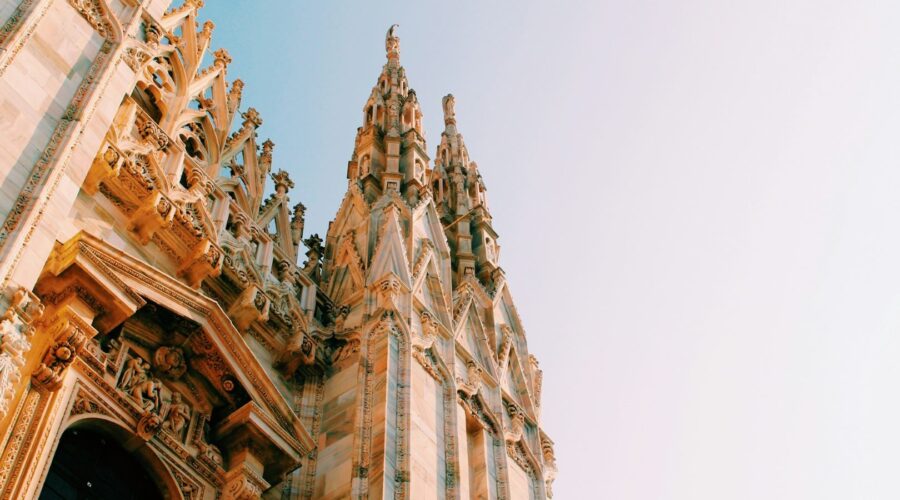
St. Boniface: The Apostle of Germany and Patron Saint of Mariners
Early Life and Education
Boniface was born Winfrid around 675 AD in Crediton, England. He received a thorough education at the Benedictine monastery of Exeter, where he studied theology, grammar, and rhetoric. His thirst for knowledge led him to pursue further studies at the abbey of Nursling, where he excelled in his studies and was ordained a priest in 710 AD.
Missionary Work in Germany
In 719 AD, Boniface heeded the call to spread Christianity among the pagan tribes of Germany. With the blessing of Pope Gregory II, he embarked on a dangerous and arduous mission. He traveled through Thuringia, Hesse, and Bavaria, preaching the Gospel and baptizing thousands.
Felling the Sacred Oak of Thor
One of Boniface’s most famous acts was the felling of the sacred oak of Thor at Geismar, near Kassel. This sacred tree was the centerpiece of pagan worship in the region. By cutting it down, Boniface symbolized the triumph of Christianity over paganism.
Establishment of Dioceses and Monasteries
As his missionary work progressed, Boniface founded several dioceses, including those of Mainz, Würzburg, and Paderborn. He also established monasteries and churches throughout Germany, providing centers for worship, education, and social services.
Archbishop and Martyr
In 732 AD, Boniface was appointed archbishop of Mainz by Pope Gregory III. As archbishop, he continued his missionary work and promoted reforms within the Frankish Church. In 754 AD, while on a confirmation tour in Friesland, Boniface and his companions were attacked by a mob of angry pagans. They were martyred on June 5, 754 AD.
Patron Saint of Mariners
Boniface is also known as the patron saint of mariners. This connection stems from a legend that during a storm, he calmed the waters by invoking the Trinity. Sailors and fishermen often pray to St. Boniface for protection and safe passage.
Legacy and Impact
St. Boniface’s legacy is immense. He is considered the “Apostle of Germany” for his role in converting the pagan tribes to Christianity. His missionary work paved the way for the establishment of the Christian church in Germany and laid the foundation for the development of Western civilization in central Europe.
Churches and Relics
- Mainz Cathedral houses the tomb of St. Boniface.
- Fuldatal Monastery, near Kassel, is built on the site of Boniface’s martyrdom.
- Fulda Cathedral contains relics of St. Boniface.
- Numerous churches throughout Germany are dedicated to St. Boniface.
Feast Day and Iconography
St. Boniface’s feast day is celebrated on June 5th. He is often depicted in art as a bishop holding a sword or a book, symbolizing his role as a missionary and martyr.
Conclusion
St. Boniface was a courageous and dedicated missionary who played a pivotal role in the spread of Christianity in Germany. His legacy continues to inspire and guide Christians today. As the patron saint of mariners, he is revered by sailors and fishermen who seek his protection on the open seas.
Table of Key Dates in St. Boniface’s Life Date Event c. 675 Birth in Crediton, England 710 Ordination as a priest 719 Embarks on missionary work in Germany 723 Fells the sacred oak of Thor at Geismar 732 Appointed archbishop of Mainz 754 Martyrdom in Friesland Visit the Catholic Online website for more information on St. Boniface.

Discover the History and Significance of the Holy Redeemer Catholic Church
A Spiritual Haven in the Heart of the Community
The Holy Redeemer Catholic Church stands as a testament to faith, community, and architectural beauty. Its doors have been open for over a century, welcoming countless worshipers seeking solace, guidance, and a connection with the divine. Let us embark on a journey to explore the rich history, spiritual significance, and awe-inspiring architecture of this beloved church.
History: A Tapestry of Faith and Devotion
The story of Holy Redeemer Church begins in the late 19th century, when the rapidly growing Catholic community in the area yearned for a dedicated place of worship. In 1890, a group of devout Catholics purchased a lot on Grand Avenue, and the cornerstone was laid the following year.
Under the leadership of Father James J. Greene, the church was completed in 1892. It quickly became a focal point for the community, providing spiritual nourishment and a sense of belonging. Over the years, the church has undergone numerous renovations and expansions, each reflecting the changing needs of the congregation and the passage of time.
Architecture: A Symphony of Stone and Spirit
Holy Redeemer Church is a stunning example of Gothic Revival architecture, characterized by its soaring spires, pointed arches, and intricate stonework. The exterior facade features a grand entrance with a rose window above, symbolizing the promise of salvation. The interior is equally impressive, with its high vaulted ceilings, stained-glass windows, and ornate altar.
Community: A Vibrant Tapestry of Faith
Holy Redeemer Church is more than just a building; it is the heart of a thriving community. The congregation is a diverse and welcoming group, drawn together by their shared faith and a desire to serve their neighbors. The church offers a wide range of programs and activities, including faith formation classes, youth groups, and social justice initiatives.
The church also plays a vital role in the wider community, providing support for those in need through outreach programs, parish meals, and emergency assistance. It is a beacon of hope and a source of inspiration for all who cross its threshold.
The Holy Redeemer Catholic Church Today
Today, Holy Redeemer Catholic Church continues to be a vibrant and active parish. It offers a variety of Mass times, provides spiritual guidance through its priests and deacons, and hosts numerous community events and programs.
Whether you are a lifelong parishioner or a visitor seeking a spiritual sanctuary, Holy Redeemer Church welcomes you with open arms. Its rich history, inspiring architecture, and strong community spirit make it a must-visit destination for anyone interested in the Catholic faith or the cultural heritage of the area.
Practical Information:
- Address: 1724 W Grand Ave, Chicago, IL 60622
- Phone: (773) 421-5114
- Website: holyredeemerchurchchicago.org
- Mass Times:
- Monday-Friday: 8:00 AM
- Saturday: 4:30 PM
- Sunday: 7:30 AM, 10:00 AM, and 12:30 PM
Additional Resources:
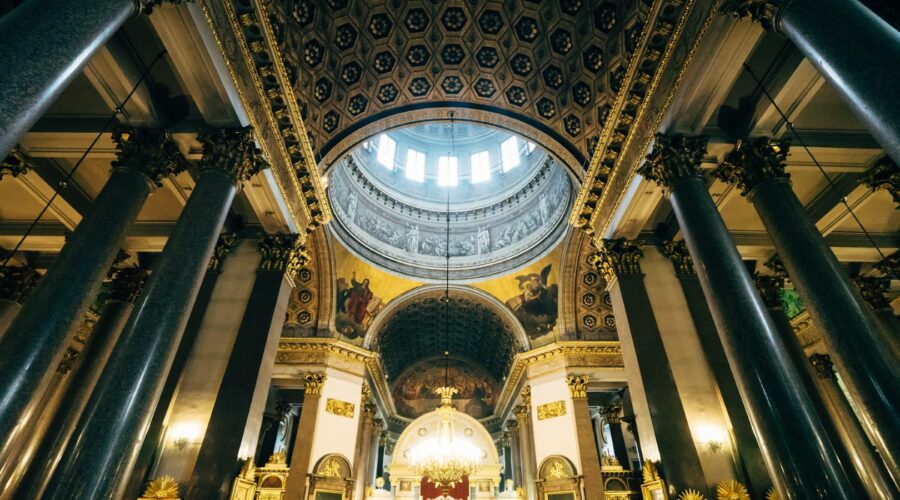
St. Michael the Archangel Church: A Haven of Faith and Heritage
“`html
Nestled amidst the bustling streets of a vibrant metropolis, St. Michael the Archangel Church stands as a beacon of faith, a testament to the enduring legacy of the past, and a vibrant hub for community engagement. With its towering spires reaching towards the heavens and its intricate architecture, the church invites all who enter to experience a profound connection with the divine and to explore the rich history that has shaped its existence.
A Journey Through History
The origins of St. Michael the Archangel Church can be traced back to the early 18th century, when the burgeoning Catholic community in the area sought to establish a place of worship worthy of their growing congregation. The construction of the church commenced in 1726, and after years of meticulous planning and execution, it was finally consecrated in 1733.
Over the centuries, St. Michael the Archangel Church has undergone several expansions and renovations, reflecting the growth and evolution of the surrounding community. The most significant addition to the church was the construction of the grand Gothic Revival nave in the 19th century, which doubled the size of the original structure.
Architectural Marvels
St. Michael the Archangel Church is a masterpiece of ecclesiastical architecture that seamlessly blends various architectural styles. The exterior of the church is characterized by its imposing Gothic Revival façade, complete with pointed arches, ribbed vaulting, and elaborate decorative elements.
- The Nave: The nave, the central part of the church, is a magnificent space with soaring ribbed vaults and stained-glass windows that flood the interior with a kaleidoscope of colors. The intricate carvings and vibrant frescoes adorning the walls depict biblical scenes and the lives of saints.
- The Sanctuary: The sanctuary, the most sacred space within the church, is home to the altar, where the sacraments are celebrated. The ornate reredos behind the altar, adorned with intricate carvings and gilded details, is a work of art in its own right.
- The Transepts: The transepts, the arms of the church that extend from the nave, feature side altars dedicated to various saints. The stained-glass windows in the transepts depict scenes from the life of St. Michael the Archangel, the patron saint of the church.
A Vibrant Community
Beyond its architectural grandeur, St. Michael the Archangel Church is a thriving hub for community engagement. The parish offers a wide array of programs, events, and ministries that cater to the spiritual, social, and educational needs of its diverse congregation.
Community Outreach
- The church operates a soup kitchen that provides meals to those in need.
- Volunteers from the parish visit the sick and elderly in hospitals and nursing homes.
- The church hosts clothing drives and other charitable initiatives to support the underprivileged.
Educational and Spiritual Programs
- The church offers religious education classes for children and adults.
- Bible study and prayer groups provide opportunities for spiritual growth and community.
- The church hosts lectures, workshops, and retreats on a variety of religious and topical issues.
Social Events
- The parish organizes regular social gatherings, such as potlucks, picnics, and holiday celebrations.
- The church has a vibrant choir that performs during masses and special events.
- The parish offers a variety of youth programs, including sports, music, and drama.
A Legacy of Service
Throughout its long and storied history, St. Michael the Archangel Church has played an integral role in shaping the social and spiritual fabric of its community. The church has been a pillar of support during times of crisis, providing refuge and assistance to those in need.
Year Event 1793 The church provided shelter and refuge to refugees during the Haitian Revolution. 1861 The church raised funds for the Union Army during the American Civil War. 1929 The church established a food pantry to help families affected by the Great Depression. 1968 The church played a key role in the civil rights movement, providing meeting space for activists and organizing voter registration drives. Visiting St. Michael the Archangel Church
St. Michael the Archangel Church is located at 225 West 99th Street in New York City. The church is open to visitors daily from 8 am to 6 pm. Guided tours are available upon request.
Mass Times
- Sunday: 8:00 am, 10:00 am, 12:00 pm, 5:00 pm
- Monday-Saturday: 8:00 am, 12:10 pm
For more information, please visit the church’s website at www.stmichaelarchangelnyc.org.
St. Michael the Archangel Church is a place of profound spiritual connection, a repository of rich history, and a vibrant hub for community engagement. Whether you are a devout parishioner, a curious visitor, or simply an admirer of architectural marvels, the church invites you to step inside its hallowed halls and experience its timeless beauty and enduring legacy.
“`
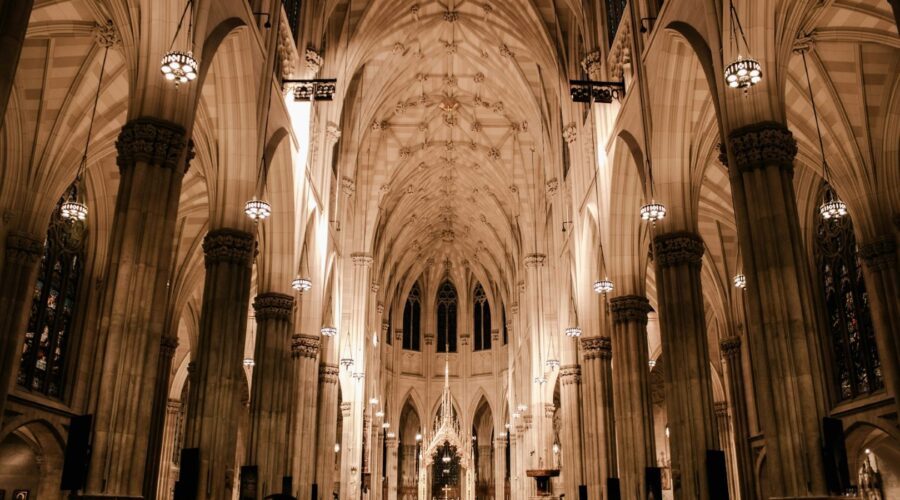
Discover the Prince of Peace Catholic Church: A Spiritual Haven in Plano, Texas
About Prince of Peace Catholic Church
Prince of Peace Catholic Church is a vibrant and welcoming parish in Plano, Texas. Established in 1985, the church has grown into a thriving community dedicated to serving the spiritual needs of its parishioners and the surrounding area. With its stunning architecture, spacious facilities, and active ministries, Prince of Peace offers a rich and fulfilling Catholic experience.
Mass and Sacraments
Prince of Peace offers a variety of Mass times to accommodate the schedules of its parishioners:
- Saturday: 4:30 PM
- Sunday: 7:30 AM, 9:00 AM, 11:00 AM, 5:00 PM
- Monday: 7:00 AM
- Tuesday: 9:00 AM
- Wednesday: 9:00 AM, 7:00 PM
- Thursday: 9:00 AM
- Friday: 9:00 AM
In addition to Mass, Prince of Peace also offers the sacraments of Baptism, Confirmation, Reconciliation, and Matrimony. For information on receiving the sacraments, please contact the parish office.
Ministries and Organizations
Prince of Peace Catholic Church offers a wide range of ministries and organizations for its parishioners to engage in. These ministries are designed to serve the needs of the parish and the community, and include:
- Altar Society
- Choir
- Eucharistic Ministers
- Lectors
- Prayer Groups
- Rosary Society
- Youth Group
- Knights of Columbus
Education and Formation
Prince of Peace Catholic Church places a strong emphasis on education and formation for all ages. The parish offers a variety of programs and resources, including:
- Sunday School
- Vacation Bible School
- Adult Faith Formation
- Youth Retreats
- Bible Study Groups
Social and Outreach Programs
Prince of Peace Catholic Church is actively involved in serving the local community. The parish offers a variety of social and outreach programs, including:
- Community Dinners
- Food Pantry
- Clothing Drive
- Soup Kitchen
- Homeless Shelters
Contact Information
Prince of Peace Catholic Church
5100 Plano Parkway West
Plano, TX 75093
Phone: (972) 964-8176
Email: [email protected]
Website: https://www.popcc.org/
Conclusion
Prince of Peace Catholic Church is a vibrant and welcoming parish in Plano, Texas. With its stunning architecture, spacious facilities, active ministries, and commitment to serving its parishioners and the community, Prince of Peace offers a rich and fulfilling Catholic experience. Whether you are seeking spiritual growth, community involvement, or simply a place to connect with fellow believers, Prince of Peace Catholic Church is a place where you can find a home.